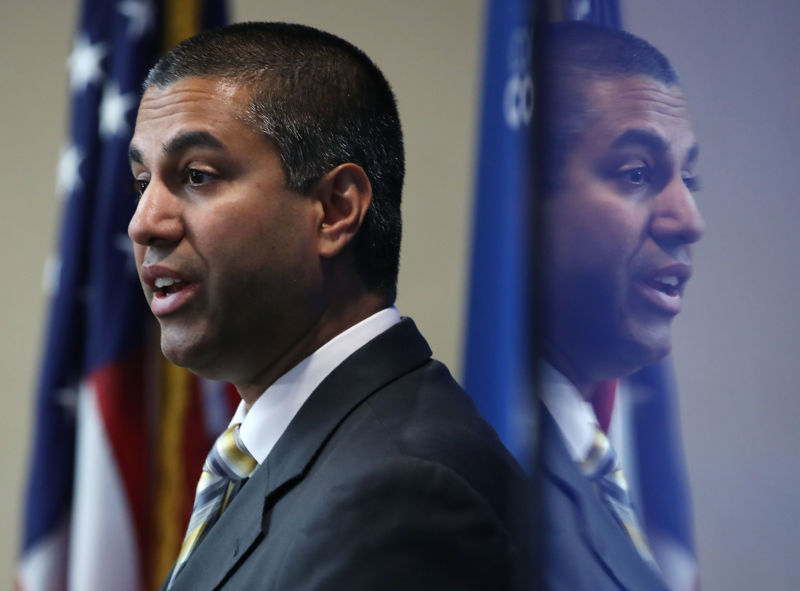
The Federal Communications Commission is changing the rules for an upcoming spectrum auction in a way that will make it harder for small carriers to buy spectrum for deploying broadband.
The change—requested by T-Mobile, AT&T, and Verizon—will help the big carriers deploy nationwide 5G networks, according to Chairman Ajit Pai's proposal. But the change will also make it harder for small companies to buy spectrum that could be used to fill broadband gaps in rural areas.
In 2015, the Obama-era FCC set aside spectrum between 3550MHz and 3700MHz for a new Citizens Broadband Radio Service (CBRS) and ruled that 10MHz licenses would be auctioned off in individual Census tracts, which are small areas containing between 1,200 and 8,000 people each. Selling spectrum licenses in such small areas was meant to give small companies a shot at buying spectrum and deploying wireless broadband in underserved areas.
But big carriers pushed the FCC to increase the size of the license areas, and FCC Chairman Ajit Pai is complying. Pai's proposal, released last week and scheduled for an FCC vote on October 23, would increase the size of license areas from census tracts to counties.
While there are more than 74,000 census tracts in the US, there are just 3,141 counties.
Pai's FCC says making the license areas bigger will help carriers use this spectrum for large 5G mobile networks. But small ISPs that would use the 3.5GHz band to deliver Internet service to rural homes say the change could prevent them from buying spectrum.
To get a license covering an area smaller than a county, small ISPs would have to buy it from one of the winning bidders. Pai's plan allows licenses "to be partitioned and disaggregated on the secondary market."
The FCC proposal also increases CBRS spectrum license terms from three years to ten years. Increasing the size of license areas and the length of license terms would make licenses less affordable for small entities, then-FCC Commissioner Mignon Clyburn said last year after Pai first floated his proposal.
Plan “heavily biased toward large companies”
The FCC will offer 15 percent bidding credits to small businesses and rural providers to help them afford licenses. But county-sized licenses will still be out of reach for many ISPs, according to the Wireless Internet Service Providers Association (WISPA), which represents more than 3,000 small ISPs that offer service over wireless networks.
WISPA CEO Claude Aiken wrote in a statement last week:
Throughout this proceeding, WISPA and our allies from a wide range of critically important industries have argued against county-sized licenses. US counties vary greatly in size and character. Hundreds of counties cover thousands of square miles; and many contain both densely populated urban areas and less populated suburban and rural areas. Outlying areas in such counties are generally ignored by the larger carriers today (unless subsidies are attached), and such areas will remain ignored under this new proposal.
Aiken said WISPA is worried that the FCC proposal "will slow the future deployment of fixed wireless broadband networks in rural America." WISPA pointed to FCC data showing more than 24 million Americans lack access to home Internet speeds of at least 25Mbps downstream and 3Mbps upstream. Home Internet services using 3.5GHz spectrum could help fill that broadband gap, which disproportionately affects rural areas, the group said.
"The CBRS band—and other mid-band airwaves—are the best opportunities we will see in a generation to address that problem," Aiken wrote. "But those will be missed opportunities if the FCC continues with this plan, which is heavily biased toward large companies focusing on urban areas."
"To be clear, the winners here will be large companies that will foreclose meaningful opportunities for rural small businesses to compete for mid-band spectrum, which is critically important for them to deliver broadband services to millions of rural Americans that do not have access to 25/3Mbps broadband service in their homes, farms, and businesses," Aiken also wrote.
Big carriers petitioned FCC
Pai moved ahead with his proposal last week despite pleas from small ISPs, including one from his hometown of Parsons, Kansas.
The FCC received petitions to increase the license area size from T-Mobile and CTIA, the trade group that represents T-Mobile, AT&T, Verizon, and Sprint. AT&T and Verizon separately urged the FCC to increase the license area sizes.
Pai didn't go quite as far as the big carriers hoped, though. T-Mobile, AT&T, and Verizon asked the FCC to auction licenses in Partial Economic Areas (PEAs), of which there are just 416 nationwide, including 62 with at least 1 million people each.
Pai's proposal describes county-sized licenses as a middle-ground approach that will allow carriers to use the 3.5GHz band for 5G mobile services. Using census tracts "would cause significant difficulties in deployment of large-scale networks for mobile 5G use," Pai's proposed order says. "[W]e find that increasing the size of... license areas to counties is more likely to ensure that mobile 5G deployments are feasible in the 3.5 GHz band."
The FCC also said smaller license areas would be more complex for carriers to manage. The FCC proposal notes that AT&T said it would have to "severely limit" the power of radios near border areas, and T-Mobile told the FCC "that synchronization of uplink and downlink operations with neighbors 'would be almost impossible to implement' in census tracts in large urban areas."
"Further, as T-Mobile explains, the smaller the license area, the more the interference protection requirements will limit a licensee’s ability to use its assigned spectrum throughout its service area," the FCC wrote.
The FCC also wrote that county-sized license areas will help carriers "take advantage of economies of scale, which will reduce deployment costs."
reader comments
114